For many years archery camps has been divided into two camps. One half favour fixed blade broadheads and the other mechanical. One would think that the older hunters would be in the fix blade camp, the younger in the mechanical but this is not the case. One thing all archers can agree on is that broadheads must be sharp, balanced and well-tuned.
All broadheads have a ferrule which is the main body of the head, a point and either an insert or threaded portion to attach the head to the arrow.
The difference between a fixed blade and mechanical head is determined by how the blades of the head are attached to the ferrule.
Fixed blade heads are machined either as one solid piece or have replaceable blades that are fixed to the ferrule.
Mechanical heads have blades that move on impact, that swing open and pivot through the ferrule.
Cutting diameter refers to the circular area from the most outward points of the cutting blades of the head. A larger cutting diameter greatly increase the opportunity for more devastating damage causing greater blood lose and blood trails. But with larger diameter comes the chance that wind may steer the arrow off target affecting accuracy. Smaller cutting diameters offer less cutting surface but greater accuracy and better penetration. Things to consider when choosing broadheads are the anatomy of the game animal you are pursuing. Is the animal a small body? Does the animal have tough skeletal structure protecting its vital organs? Will a larger diameter head increase or decrease your chances of penetrating and damaging those vital organs?
Penetration of the arrow through the target is another item to consider. The arrow must pass through the target leaving a wound that will allow a greater blood trail. This brings us to arrow head weight. Whether you choose a fixed blade or mechanical head, you must choose the right weight. Broadheads come in a range of weights from 85 grains to 140 and some heavier.
A great starting point is to select a head weight that matches your regular field point weight that your regularly target shoot with. You have your arrows already matched and tuned for maximum performance already at that weight. Do not fall victim to the thoughts that bigger and heavier are better; choosing a head too big and heavy can cause poor performance.
Accuracy of your arrow is the most important item to consider. If your arrow cannot consistently hit the target you are aim for, you’re not going to be successful.
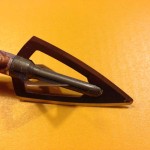 Fixed Blade Heads
Fixed Blade Heads
Pros:
– no moving parts, rubber bands or collars
– removable or replaceable blades
– more suitable for lower poundage draw weights
– very good penetration to kinetic energy transfer (no energy loss on impact)
Cons:
– Smaller cutting diameters ( 1 ¼ inch is about the biggest)
– Flight patterns in wind can cause drifting
 Mechanical Broadheads
Mechanical Broadheads
Pros:
– most of the time they shoot exactly the same as your field points
– significantly larger cutting diameters (up to 3 inches)
Cons:
– need an O-ring or rubber band to hold the blades closed until time to deploy
– possible the blades may open early
– possible the blades open late or not at all
– poor penetration due to kinetic energy loss needed to open the blades at impact
– weaker blades due to being thinner and not ridged
This brings us to a sub category of hunting heads, not always sharp or large but designed for special species. The “Small Game” hunting arrow tips come in different shapes and sizes. Most are designed with the idea of blunt force impact doing the dispatching of the game. The simplest of these are sometimes just added between the arrow shaft and field point like Bateman Adders.
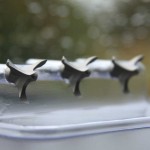 Some heads are a bit more involved with springs and wires designed to grab and tear along with transferring blunt force from the arrow like the Zwickey Judo Unloseable. I prefer the one piece style heads like the G5 Small Game Head. They offer a 1“ grabbing diameter, are stainless steel that can easily be sharpened with a round file.
Some heads are a bit more involved with springs and wires designed to grab and tear along with transferring blunt force from the arrow like the Zwickey Judo Unloseable. I prefer the one piece style heads like the G5 Small Game Head. They offer a 1“ grabbing diameter, are stainless steel that can easily be sharpened with a round file.
For the bird hunters out there, the archery pros have you covered as well. With the Snaro Bird heads, it is possible to take pheasants, ducks, grouse and small mammals. These heads have a blunt center with four wire loops in the form of a clover. These heads are heavy though, weighing in at 200-300 grains and a very large diameter of up to 6“. These heads fly much slower and are not effective at long ranges, but are fun for an afternoon of some different hunting. Key points to remember when setting up broadheads no matter what style you choose are to make sure they are sharp and practice, practice and wait for it …….. PRACTICE!
~
Thanks for reading! If you enjoyed this post please share it with the world!
Don’t forget you can read more articles from Jason Maure’s blog “The Canadian Outdoorsman” here and don’t forget to like us on Facebook.
If you’d like to get immediate email notifications when a new article, contest or show is posted; enter your email address in the sign up box on the left.
Discover more from The HuntFishTravel Show
Subscribe to get the latest posts sent to your email.
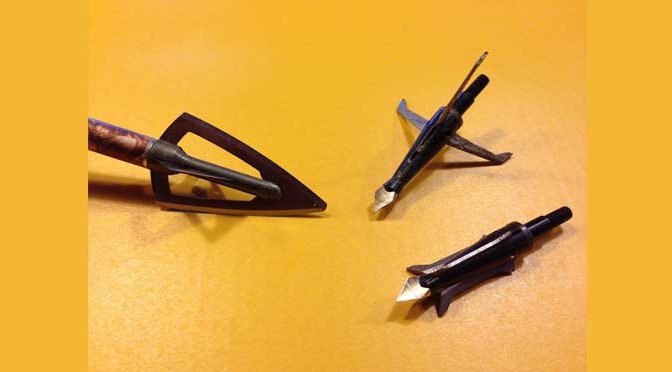
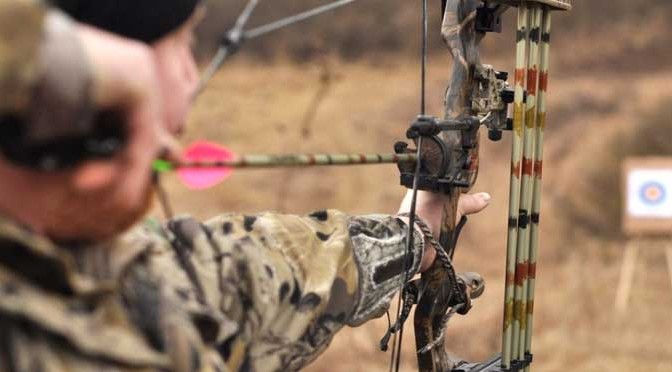

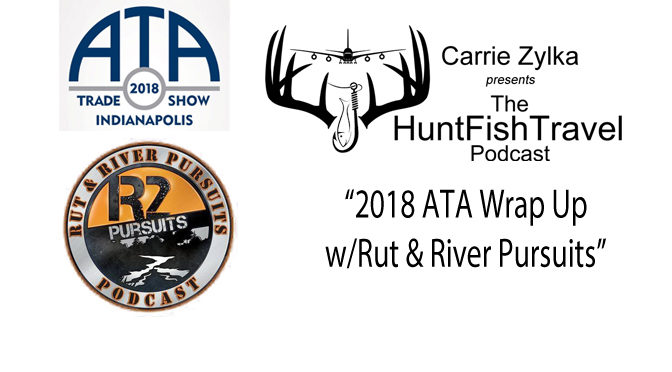
Some hunt more than Wh deer ( back yard bambis) and I ALWAYS use Fixed Heads. Try the Muzzy Trocars and the Helix is light years ahead of Mech heads for Penetration and cutting and flying straight .Having hunted over 90 species with bow, and Placed 62 different Species into the Books,There is a reason Alaska and cape Buff Phs will not let one use mech.
There is More to Bow hunt than the Soft and over rated WH deer. Bow since 1956 with 580 Bow harvests with Fixed heads.
We laugh at those that use Mech on Elk and big animals in Colorado
NZ and Africa have all cripples Paid for…… and Alaska will not one use them ( and parts of Canada, for moose and bear) .
YOUR CONS ON THE MECH ARE NOTEWORTHY .
I would agree with this comment if if wasn’t such a dick move.
Not everyone has the opportunity to hunt cape buffalo or hunt in Alaska.
I love hunting deer and don’t think they are overrated. I don’t know what brand MECH Broadheads are but this guy obviously doesn’t like them even though they aren’t even mentioned in the article.
This guy obviously wanted a reason to slam deer and toot his own horn.
I’ve taken over a dozen elk with mechanical broad heads. Never lost one. Thhis article is a great write up.
I personally find this comment extremely distasteful. As Vicky stated – not everyone has the opportunity to hunt game larger than deer. And not everyone even wants to (like me).
The statement that Whitetails are overrated is quite frankly a stupid statement. Whitetail deer account for more hunting opportunities than any other large game species in the world; to discount them is to do most hunters a disservice.
I personally have absolutely zero inclination to hunt Cape Buffalo or even Elk. I love my Whitetail Deer and would appreciate it if the hunting elitists would keep their snobbish comments to themselves.
Now then, to address the ACTUAL subject matter, this post is very well written and thought out and I appreciate the fact that Jason included all kinds of broadheads instead of a biased opinion.
Thank you all for showing interest in my article! This may lead to a future article on the debate of professional hunters and ethics maybe? I have used both on various animals and body types. The article was meant to make you think not to persuade in one direction or the other, but I did want it to start conversation! Hope fully this will spark more interest .
Well said Carrie! Thank you for the support. I tried to remain neutral in the article. Obviously I have shot both styles with equal success, be it not in the elite b & c levels.
You might want to look at the newer design in broadheads. The toxic head is a fixed design that has 5 inches of cutting area due to the use of curved blades. Also, mechanical broadheads are trending to the use of deploy from the rear design that overcome many of the problems of the earlier mechanical designs.
Hi there Jason! I find this fascinating from a traditional standpoint because mechs are the absolute worst thing you could ever shoot out of a traditional bow because we don’t have the speed to make up for all the KE they rob. I also found your comment about not buying into heavy heads interesting because in our world the opposite is absolutely true. Heavy arrows + heavy heads + fixed blade = optimum results. Sure you can take game with a 125g or 145g head. I’ve done it. I’ve had several friends do it. Shot placement is key. But I’ll never do it again. I haven’t used anything but a 250g or more for the last two years and I set my arrows up for that. Nothing wrong with a heavy head or heavy arrow if it is tuned to be heavy and still fly good out of your bow. I absolutely agree with you there. Good flight and sharp heads are the basics. Thank you for the post.
Great job Jason! I’m sure that this debate will never end. I personally have used both styles of heads effectively, and am currently looking into moving towards flint knapped and bone style heads myself, although I still have some standard steel blades at the ready. I think that with the surge we are experiencing with new comers to the tradition of hunting (I despise the term “sport”, for many reasons) articles like this are very important for helping to educate realistically about the different styles of heads out there, and the pros and cons of each. I have had to discontinue watching a lot of hunting programs, due to their taking several marginal low percentage shots, then claiming how they would have never taken such a shot, or even recovered the animal, if it weren’t for the head that they promote. 95% of the equation is shot placement, and the archers ability and range.
Hi Jason, nice article. I have been hunting with archery equipment for 38 years and have taught countless new recruits to the world of bowhunting. I think we can all agree the biggest reason most folks want to use mechanical heads is because they are much easier to tune for better arrow flight with todays faster bows. A well tuned bow takes time and patients and will shoot fixed blade heads just fine but most folks are looking to get into the game faster and easier.That seems to be the way the world is now.I have used both styles with success on deer,blackbear and turkey with compound and traditional. I feel both styles have a place in the woods as long as the the hunter understands it’s more about shot placement and hunter ethics on angle, distance and ability with chosen equipment. A heavy arrow will always out perform a light one in tunability with either head when under akward hunting positions and excitable moments. A bow will be quieter and very easy to shoot with a heavier arrow. When I center punch a whitetail through the lungs with an expandable or a fixed head they both only make it 30 or 40 yds but I choose fixed heads for deer simply for the high percentage of penatration when a heavy bone is struck and complete pass throughs, without exit holes it’s harder to follow a blood trail to the animal. For turkeys I love big expandables but the turkeys don’t. I should mention that most of my shots are under 25 yds and I shoot 50 lbs with my long bow,recurve and 60 lbs on my compound and I also practice on animal targets exsclusivly unless tuneing. I learned early in my bowhunting journey that tried and true is the way to go. I like your artical jason because you give some pros and cons of both styles. It is nice to have a choice. A carpenter doesn’t have just one hammer for all jobs, a golfer has more than one club. I think of it as useing diffrent heads for diffrent animals for the best possible outcome and quickest Kill.
Kevin thank you for taking time to read and comment on the article. I love getting feed back. I like the way you think on this topic, sportsman today are falling into the trap of taking the easy path. that being said the easy path gets more archers out there in the field but they lack the basics and fundamental’s behind why, when and where. I really hope this blog and more to follow help provide some background info on why when where how we do things.